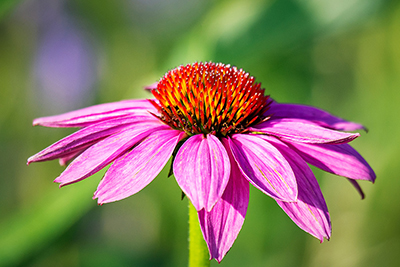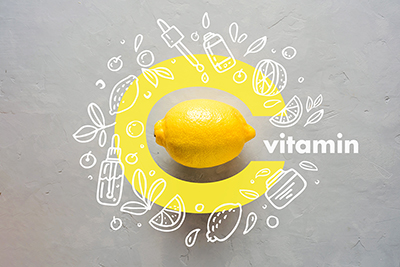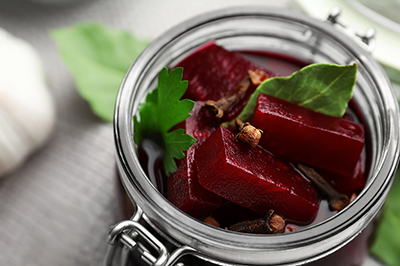What Does an ND’s Medicine Cabinet Look Like?
I see my medicine cabinet like a first-aid kit: reliable, useful, and stocked! That being said, everyone’s medicine cabinet should look different. Each individual has their unique medical histories, constitutions, and personal preferences. Get to know yourself to ensure your cabinet works for you.
Acute Medicine
To be a useful medicine cabinet, it must first and foremost contain remedies for the most common acute illnesses. Upper respiratory tract infections (URTI), such as colds and flus, are the most common reasons for doctor visits.[i] As most might know, many common illnesses are due to viruses, so antibiotics wouldn’t be helpful. Medicinal herbs such as echinacea and elderberry are often a good option to consider in these cases.
 Being a native species, echinacea is clinically studied for its effects on the immune system, in turn helping alleviate URTI symptoms and shortening their duration. Its benefits have recently encouraged further studies on how it can potentially be useful in COVID‑19. To make the most of the herb, it should be taken at the start of cold or flu symptoms.[ii]
Being a native species, echinacea is clinically studied for its effects on the immune system, in turn helping alleviate URTI symptoms and shortening their duration. Its benefits have recently encouraged further studies on how it can potentially be useful in COVID‑19. To make the most of the herb, it should be taken at the start of cold or flu symptoms.[ii]
Elderberry is another herb that is associated with combating colds and flu. Many take this herb regularly during the cold-and-flu season to prevent or shorten illness.[iii] The bonus of this herb is that it tastes good, so it’s a popular one with kids! Elderberry is often found as syrup, gummies, or in concentrated or powder form to be mixed into drinks. All these options make it palatable and convenient for kids and adults alike, to take regularly as prevention, or to alleviate symptoms if one does fall ill.
 Everyday Medicine
Everyday Medicine
For everyday bumps and bruises, or any sore muscles, I’ve got arnica covering my back (pun intended). Arnica montana, an herb in the daisy family, has been traditionally valued for being antibiotic, anti-inflammatory, antirheumatic, and analgesic, amongst numerous other functions. Applied topically, it reduces swelling and pain from minor injuries, overexertion, and bumps. It also helps dissipate the discolouration from bruises.[iv]
For an internal approach to heal sore and stiff muscles, I have magnesium handy. Magnesium is a fundamental mineral that our body needs. It is involved in numerous physiological reactions that ensure our body is running well. Magnesium helps muscles relax, so when I feel a tension headache coming or I have overworked my body, I won’t hesitate to take some magnesium. Warning: Choose magnesium bisglycinate as it is gentle on the stomach and not likely to cause diarrhea like the citrate form can!
A big part of naturopathy is prevention. Prevention focuses on supporting the immune system and the normal functioning of the body. I have two vitamins, C and D, always present in my medicine cabinet for this reason.
 Vitamin C is an essential nutrient for the human body; no surprise it is involved in many reactions inside of us. It is also a strong antioxidant and supports immune defence. When deficient, it has been shown to cause an impaired immune system, which means being more vulnerable to infections. Supplementing regularly with vitamin C has been shown to both prevent and treat respiratory and systemic infections.[v]
Vitamin C is an essential nutrient for the human body; no surprise it is involved in many reactions inside of us. It is also a strong antioxidant and supports immune defence. When deficient, it has been shown to cause an impaired immune system, which means being more vulnerable to infections. Supplementing regularly with vitamin C has been shown to both prevent and treat respiratory and systemic infections.[v]
Vitamin D is made from sunlight and present in food. People living in Canada do not receive as much sunlight as their southern neighbours. Vitamin D is present in some foods, but it is very hard to eat enough to reach an adequate intake. Therefore, supplementation is the most efficient way to confirm you are getting enough.[vi] The tricky part with vitamin D is how much to dose, as everyone has a different level, and many individual characteristics will affect your level of absorption of this vitamin. Speak to your naturopathic doctor to figure out the specifics.
 Food as Medicine
Food as Medicine
I often remind patients: supplementation is exactly that; it supplements your food. It is crucial to commit to a healthy, well-balanced diet. From this idea, I see my whole kitchen as a medicine cabinet as well, because nutritious food is medicine. In a utopian world, our diets would satisfy all nutrient needs we have, and everybody would eat for their own body, taking into account illnesses, diseases, propensities, and preferences. When “utopia” is out of reach, or when we get off-track and need added support, adding high-quality botanicals and nutraceuticals can help.
 Apart from the fridge and pantry, where most food is stored, I have a medicinal herb cabinet where I store loose dry herbs and store-bought herbal teas. I have a concoction of dry herbs for after dinner or before bedtime with peppermint, chamomile, lemon balm, and a sprinkle of lavender. I have store-bought tea bags for the occasional sore throat and for colds and flu. Store-bought herbal teas are a great way to vamp up your medicine cabinet without adding too many things you are not sure you will use. There are many products on the market to suit many needs: digestion, sleep, mental focus, heart health, and the list goes on…
Apart from the fridge and pantry, where most food is stored, I have a medicinal herb cabinet where I store loose dry herbs and store-bought herbal teas. I have a concoction of dry herbs for after dinner or before bedtime with peppermint, chamomile, lemon balm, and a sprinkle of lavender. I have store-bought tea bags for the occasional sore throat and for colds and flu. Store-bought herbal teas are a great way to vamp up your medicine cabinet without adding too many things you are not sure you will use. There are many products on the market to suit many needs: digestion, sleep, mental focus, heart health, and the list goes on…
Conclusion
Getting to know yourself is really the first step to understanding what you can do for yourself now, and as prevention as we age. Our needs and circumstances are constantly changing, so be flexible, patient, and curious to what might come up. It will be the best tool to decide how to stock up your medicine cabinet. Happy discovery!
 Dr. Juliana Rosario Yeung, ND, BSc Agr, BSc
Dr. Juliana Rosario Yeung, ND, BSc Agr, BSc
Dr. Juliana is a mother and a naturopath passionate to guide other parents into their naturopathic journey of parenthood. She supports whatever stage one may be in: preconception, pregnancy, and postpartum.
drjulianand.com
[i] Finley, C.R., D.S. Chan, S. Garrison, C. Korownyk, M.R. Kolber, S. Campbell, D.T. Eurich, A.J. Lindblad, B. Vandermeer, and G.M. Allan. “What are the most common conditions in primary care? Systematic review.” Canadian Family Physician, Vol. 64, No. 11 (2018): 832–840.
[ii] Aucoin, M., K. Cooley, P.R. Saunders, J. Carè, D. Anheyer, D.N. Medina, V. Cardozo, D. Remy, N. Hannan, and A. Garber. “The effect of Echinacea spp. on the prevention or treatment of COVID‑19 and other respiratory tract infections in humans: A rapid review.” Advances in Integrative Medicine, Vol. 7, No. 4 (2020): 203–217.
[iii] Hawkins, J., C. Baker, L. Cherry, and E. Dunne. “Black elderberry (Sambucus nigra) supplementation effectively treats upper respiratory symptoms: A meta-analysis of randomized, controlled clinical trials.” Complementary Therapies in Medicine, Vol. 42 (2019): 361–365.
[iv] Kriplani, P., K. Guarve, and U.S. Baghael. “Arnica montana L.—A plant of healing: Review.” The Journal of Pharmacy and Pharmacology, Vol. 69, No. 8 (2017): 925–945.
[v] Carr, A., and S. Maggini. “Vitamin C and immune function.” Nutrients, Vol. 9, No. 11 (2017): 1211.
[vi] Harvard T.H. Chan School of Public Health. “Vitamin D.” The Nutrition Source. https://www.hsph.harvard.edu/nutritionsource/vitamin-d/ · Reviewed 2022‑11‑14.

 Stores
Stores